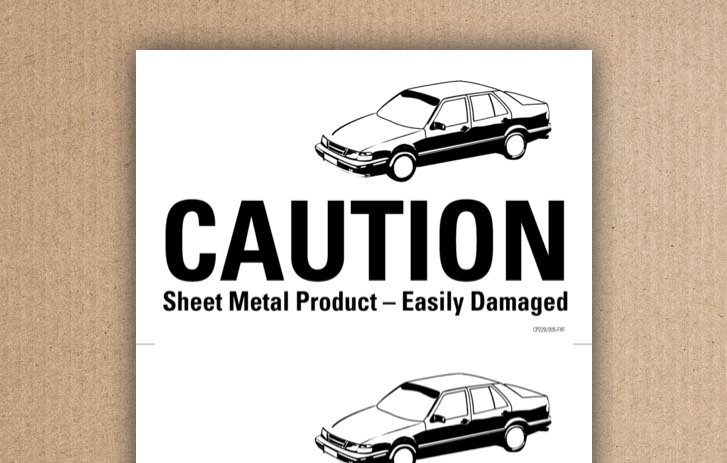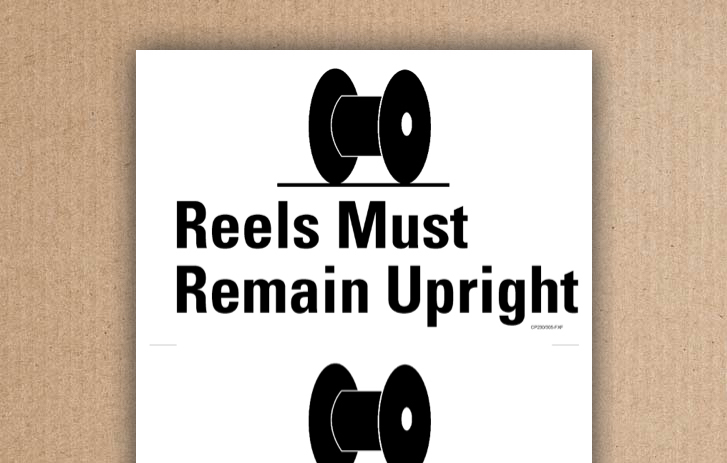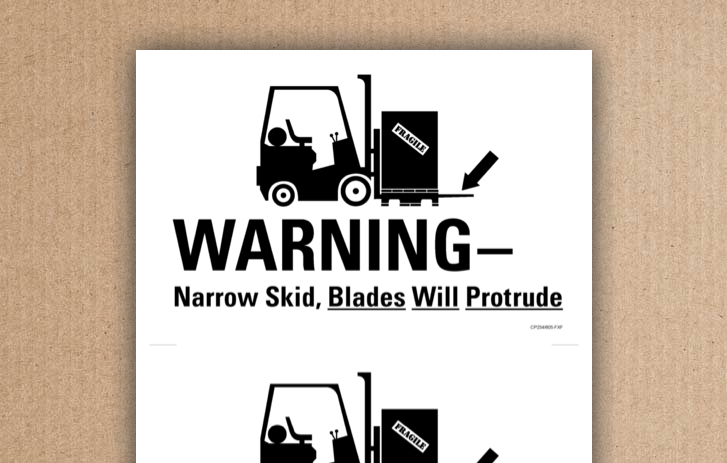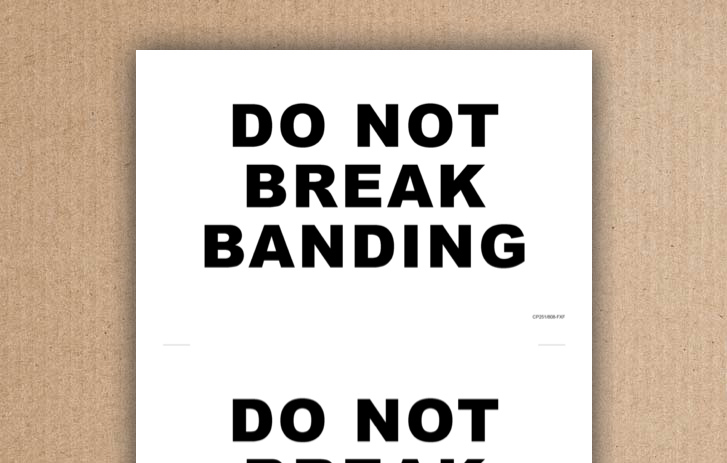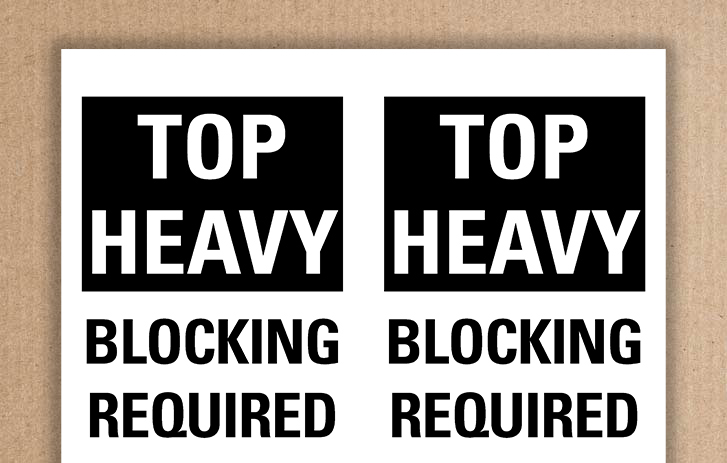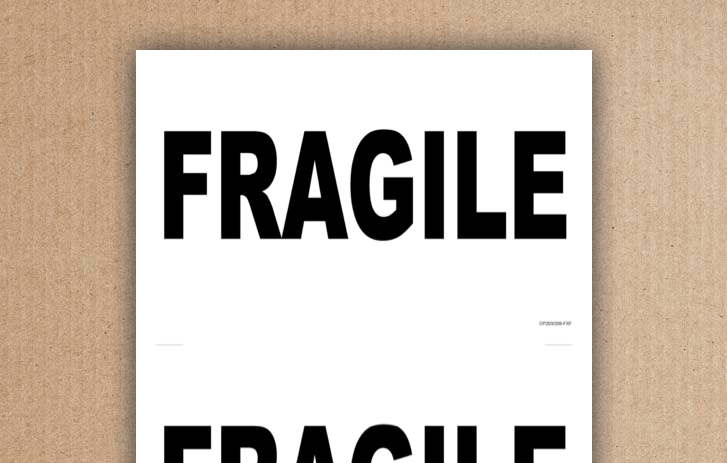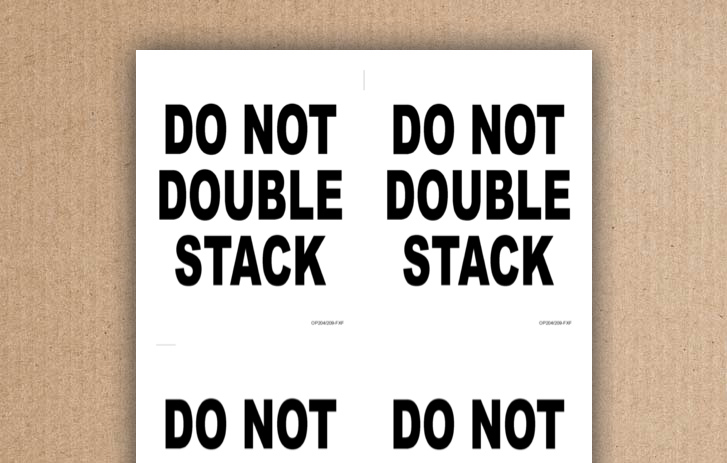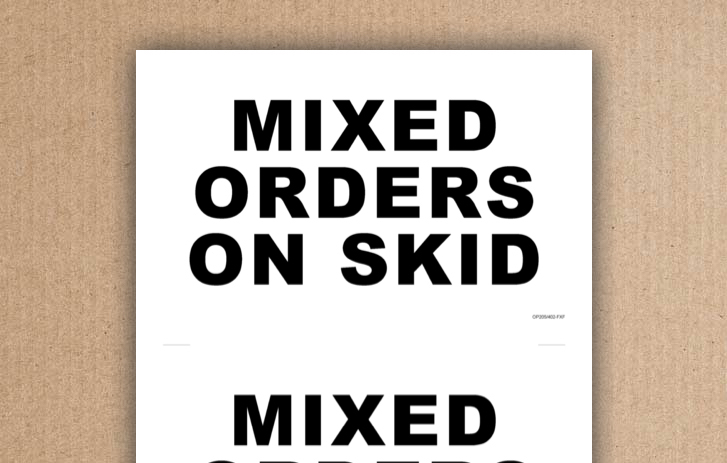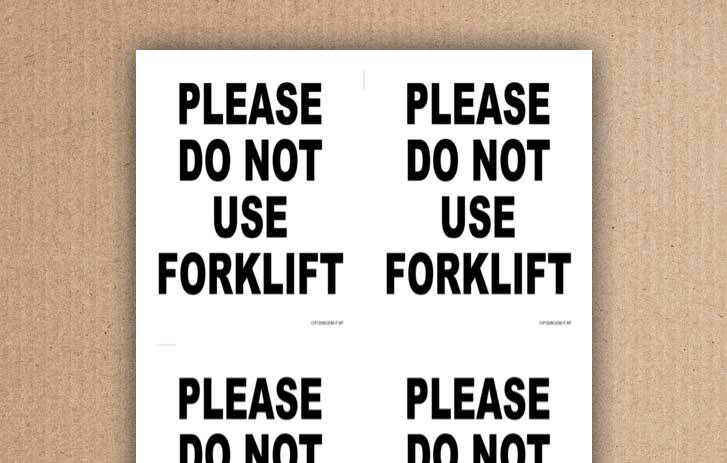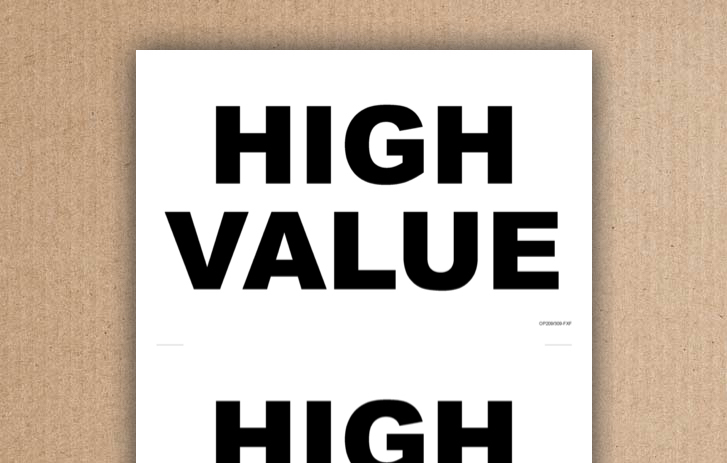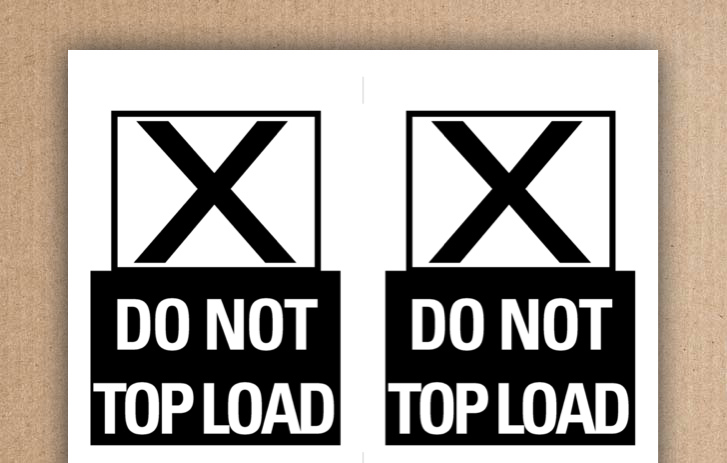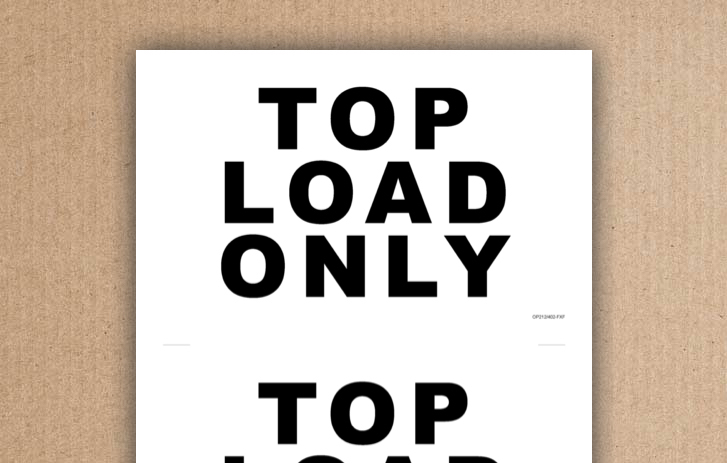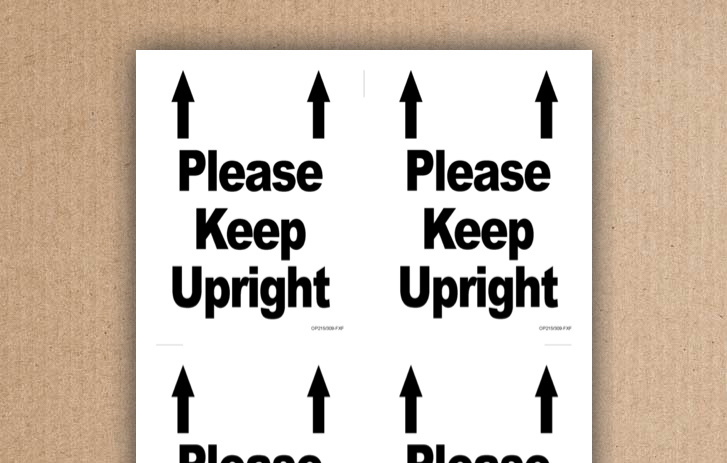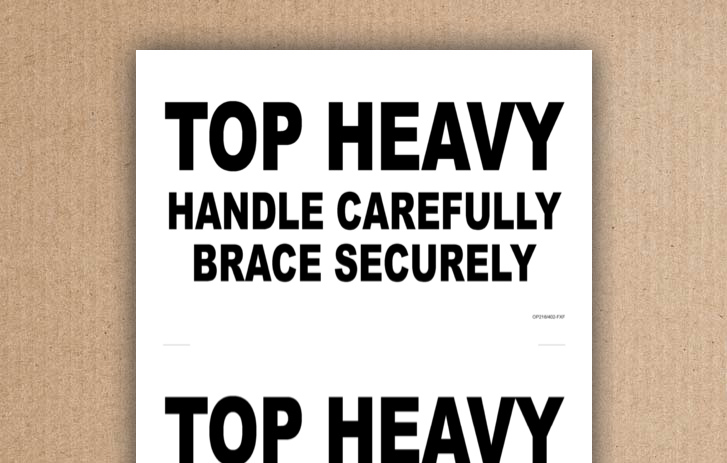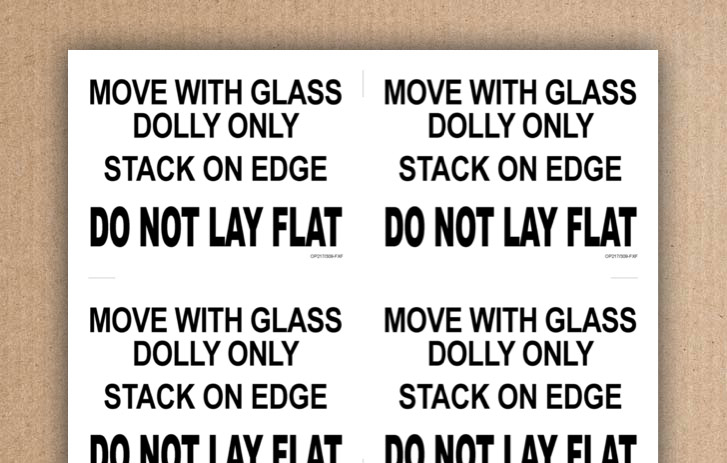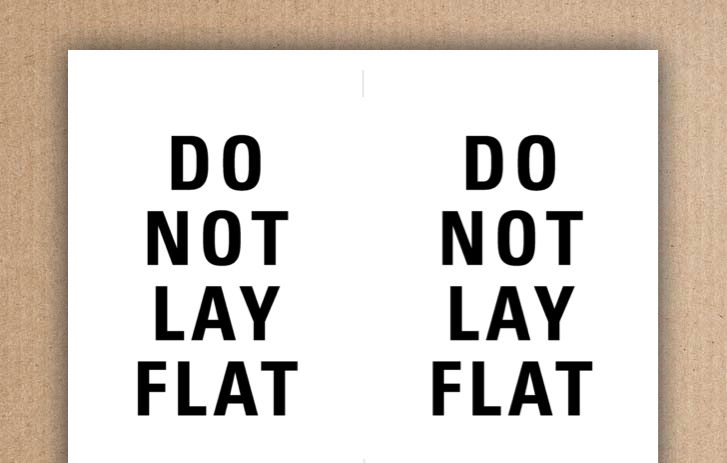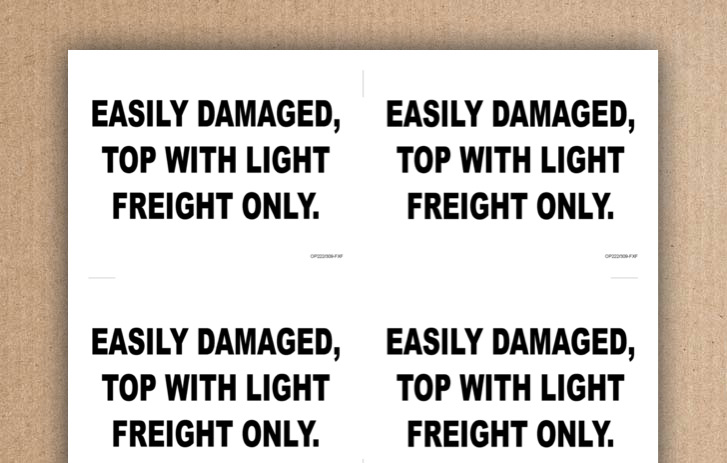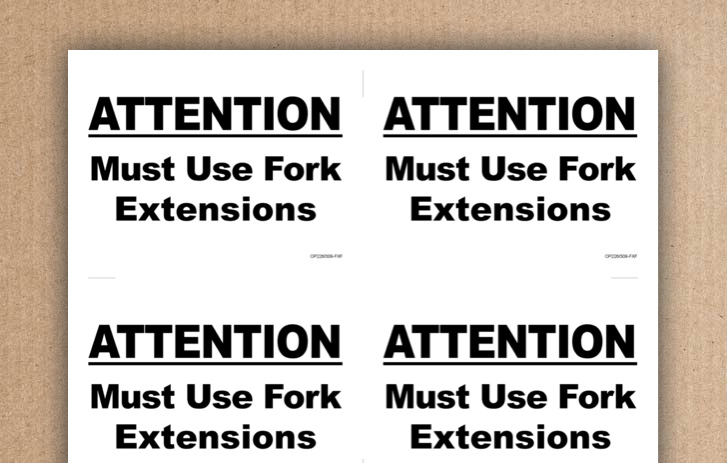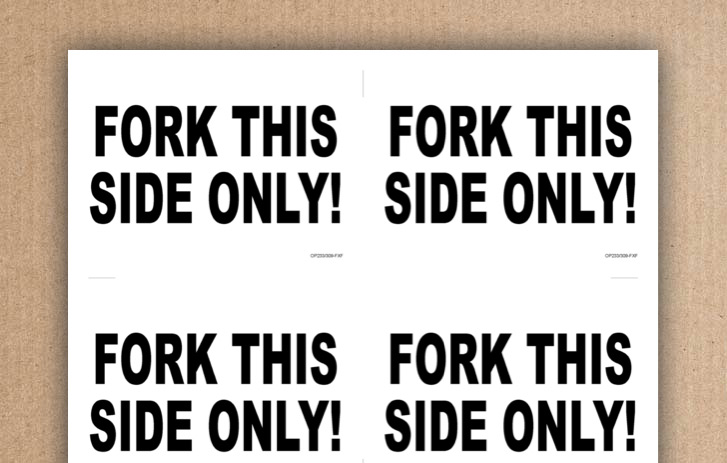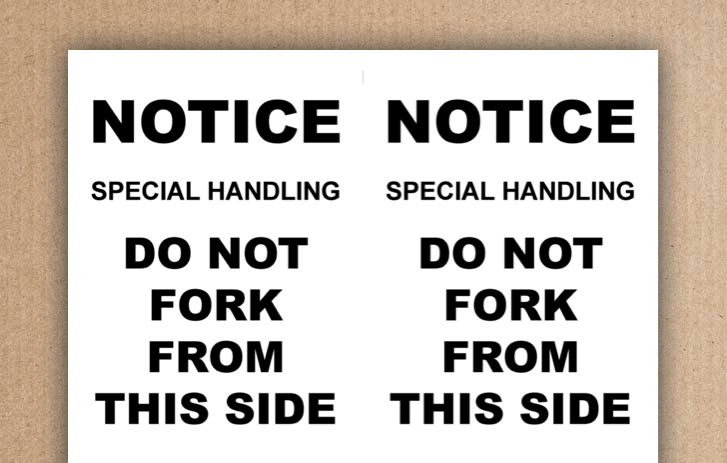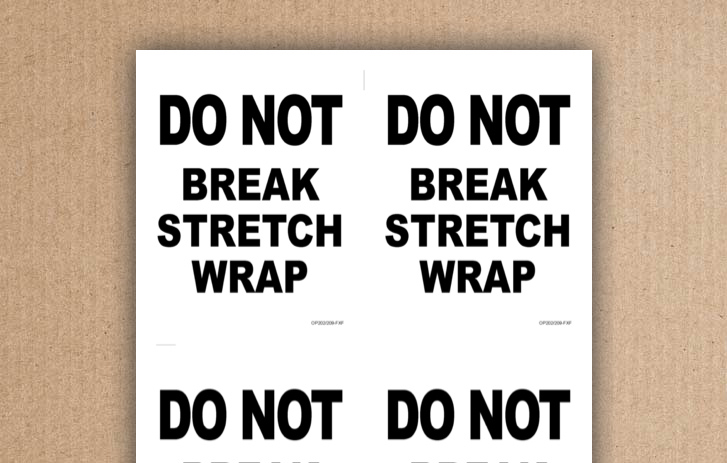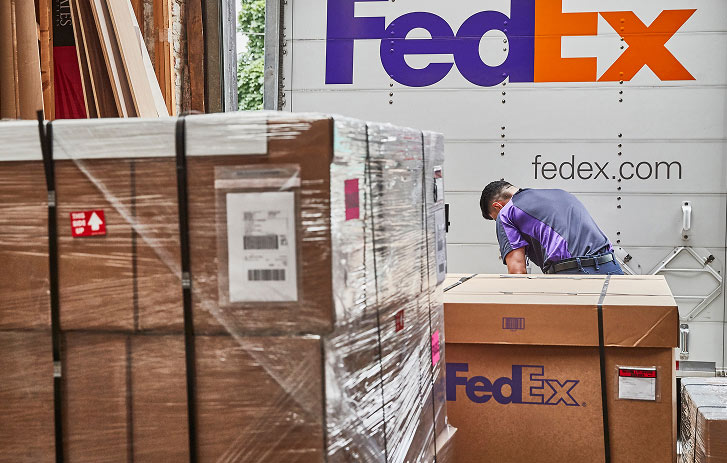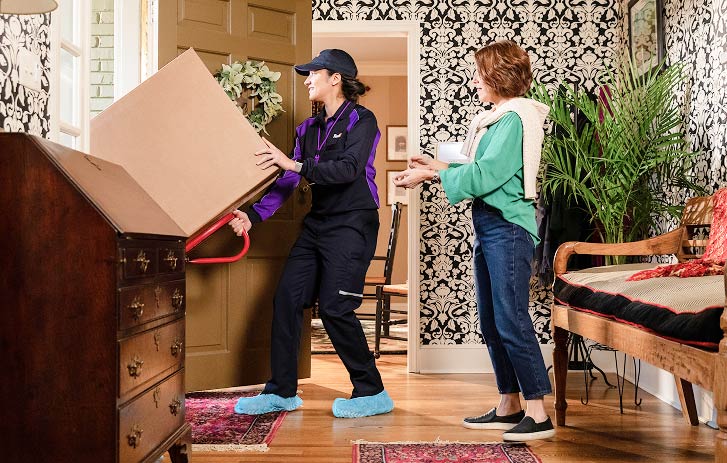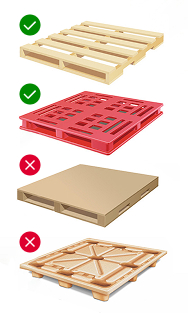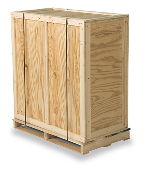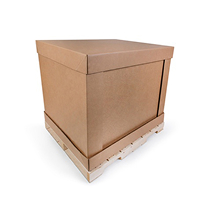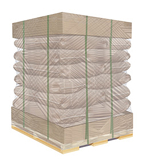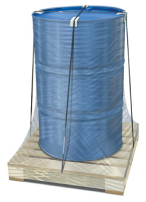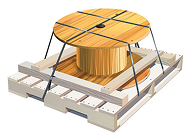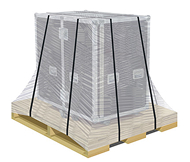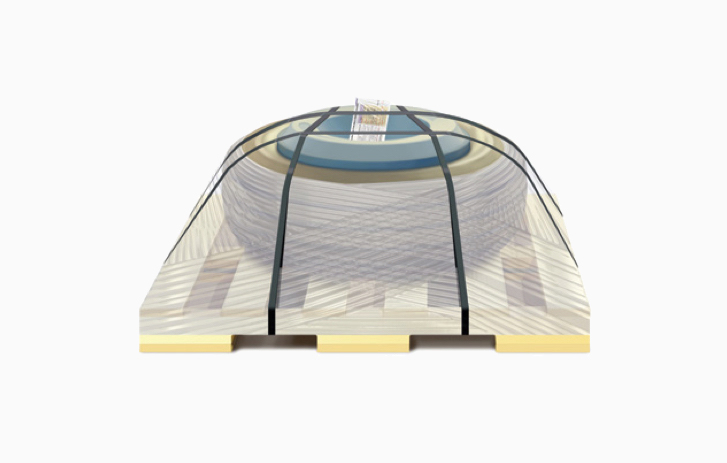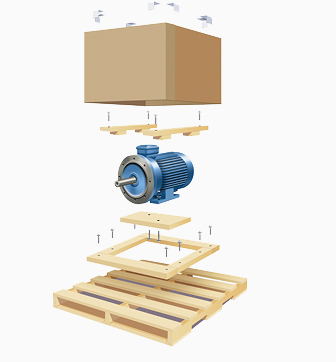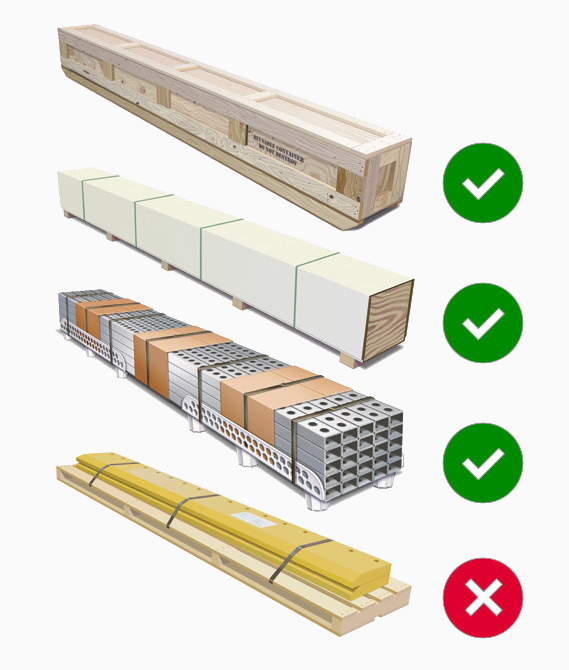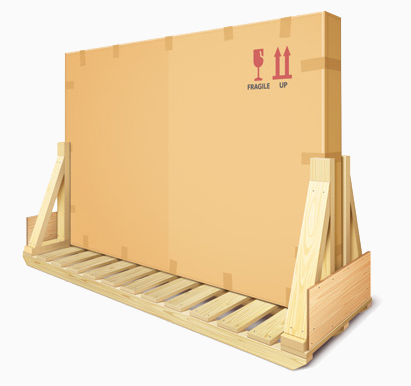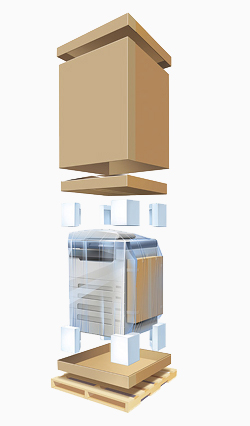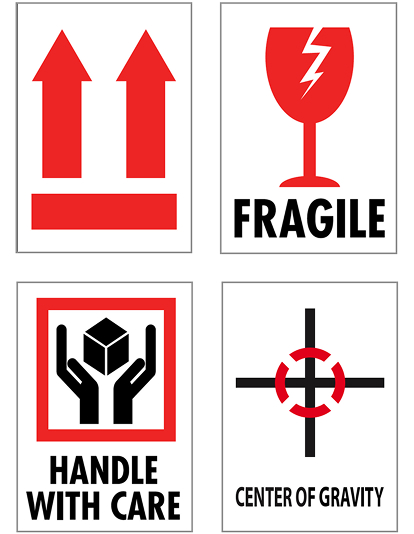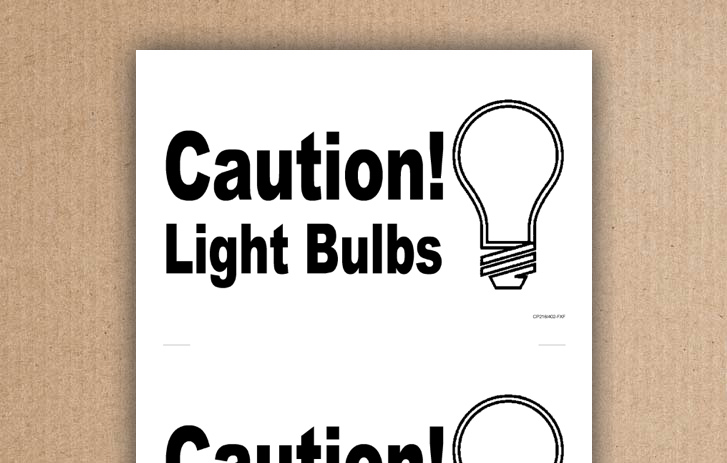FedEx® freight
packaging guidelines
Create a free business account to get shipping discounts and earn rewards.
Create a free business account to get shipping
discounts and earn rewards.
Questions about packaging large items? Contact us:
- FedEx LTL freight Customer Service at 1.866.393.4585
- FedEx air freight Customer Service at 1.800.332.0807
Get your freight ready for the air or road:
Get your freight ready for
the air or road:
Pack, ship, and protect your freight
Your shipment over 150 lbs. might travel on forklifts,
planes, trains, and trucks. There could be significant
temperature variations. And your freight may be
stacked on top of—or under—other shipments.
Use these guidelines to prep your shipment for
a variety of environments.
Your shipment over 150 lbs. might travel on forklifts, planes, trains, and trucks. There could be significant temperature variations. And your freight may be stacked on top of—or under—other shipments. Use these guidelines to prep your shipment for a variety of environments.
Your shipment over 150 lbs. might travel on forklifts, planes, trains, and trucks. There could be significant temperature variations. And your freight may be stacked on top of—or under—other shipments. Use these guidelines to prep your shipment for a variety of environments.
How to prepare freight shipments
You have options for air freight delivery within the U.S. (including Alaska and Hawaii). You can also ship freight internationally to more than 220 countries and territories. But before you ship, make sure your freight is ready for the journey.
Use a packing base
Shipments must be on a pallet, skid, or other base that’s accessible by forklift and pallet jack. Pallet-jack entry is required on two sides of the base, with a minimum clearance of 3.5".
Ensure your shipment is stackable
If it isn’t stackable, you’ll pay a surcharge. See the FedEx Service Guide Additional Handling Surcharge—Non-stackable section for more info.
Consider unbreakable banding
Band individual pieces over 150 lbs. to the pallet with unbreakable metal or plastic strapping on all sides. Hardened containers (e.g., plywood, metal) that aren’t banded should have an exterior lock or clamp. (Glue, nails, and screws are not sufficient.)
Know that temperature fluctuations are likely
Temperatures vary depending on the type of plane and the location of the cargo compartment.
Be prepared to get prior approval
The dimensions of air cargo compartments and delivery trucks determine how big your shipment can be. You can ship individual skids that weigh 151 lbs. or more with FedEx® air freight services. You need to get approval if a skid:
- Weighs more than 2,200 lbs.
- Is over 70" high, 119" long, or 80" wide
Reach out to your account rep for more info. Or call FedEx air freight Customer Service at 1.800.332.0807.
You can ship less-than-truckload (LTL) freight within the U.S., and to Mexico and Canada. Here are some general guidelines to help you get ready for the road.
Check your shipment weight and size
Your shipment can weigh up to 15,000 lbs. and be up to 15' long. No individual piece or pallet can weigh more than 4,000 lbs. If your shipment is heavier or longer, you’ll need special approval.
Reach out to your account rep for more info. Or call FedEx LTL freight Customer Service at 1.866.393.4585.
Palletize your shipment
We encourage you to pack all freight shipments on pallets. This helps reduce the risk of damage and makes handling more efficient.
Use a handling base
This is a load-bearing platform for your pallet(s). It helps to:
- Protect your LTL freight in transit
- Maintain package orientation
- Improve efficiency and safety
Be ready for temperature fluctuations
The cargo areas of FedEx trucks aren’t temperature controlled. The temperature will vary depending on the time of year, location, exposure to sunlight, and other variables.
Know that liftgates limit weight and size
You can request a liftgate at pickup or delivery if there’s no loading dock. The maximum weight and size of your LTL shipment is limited by the liftgate dimensions. The liftgate can accommodate shipments up to 78.75" x 30", and up to 4,000 lbs. If your shipment is bigger or heavier, it may be rejected.
Need to choose a FedEx freight service?
Need to choose a FedEx freight service?
Explore your U.S. and international freight options, and find other shipping resources.
Explore your U.S. and international freight options, and find
other shipping resources.
Take freight delivery to the next (service) level
Take freight delivery to the next (service) level
Deliver big shipments right to your customer's business or residence—or even through the door. Choose the FedEx Freight Direct service level that works best for your business.
How to choose freight packaging materials
From pallets to pails, learn about packaging options for your air freight and LTL shipments.
Shipping pallets
Pallets provide solid foundations for single- or multi-unit loads. They're ideal for shipping bulk consumer goods and industrial components.
Choose a wood or plastic pallet that can stand up to compression, shock, and vibration. The pallet should have forklift openings for easy handling.
The 40" x 48" Grocery Manufacturers Association (GMA) wood pallet is a solid choice. (It may also be called the Consumer Brands Association or CBA pallet.)
Plastic pallets are sturdy and reusable. But they can get slippery and may be heavier than wood.
Corrugated cardboard, pressed block-style, or molded pulp pallets are more easily damaged.
Shipping crates
Crates can be a good option for shipping fragile, high-value, heavy, or oddly shaped items. A crate should be banded to a pallet or have forklift openings.
Choose crates made of quality lumber—ideally plywood.
Avoid using oriented strand board (OSB), medium-density fiberboard (MDF), or particleboard.
Note: To prevent stowaways, TSA regulations require global air shipments over 150 lbs.—or large enough to hold a human—be locked or secured with two bands in each direction (four bands total).
Freight boxes
They’re also called bulk bins, cargo boxes, or bulk containers. FedEx Freight® boxes are larger and sturdier than standard shipping boxes. Plus, you pay a predictable flat shipping rate, and don’t need to classify your LTL freight.
Prefer to use your own container? Send your freight on its way in a corrugated pallet box, also known as a Gaylord box.
Bagged products
Examples are gardening materials and bulk dry goods. Bagged products can shift and change shape in transit. They're also susceptible to puncturing. They should travel on a pallet for easy handling.
- Put a corrugated cardboard tray on top of the pallet (under the bottom bag).
- Interlock-stack the bags, use tier sheets, and have a second tray cover the unitized load.
- If possible, place cardboard around the outside of the bags.
- Use stretch wrap and banding to keep all bags within the pallet perimeter. (The top and bottom pallet trays need to be at least 1.5 times the depth of the bags.) Cushion the unitized perimeter with corrugated boards.
Drums and pails
These items often contain liquid chemicals, food-grade products, or powdered materials. They can be susceptible to shifting, so secure them to the pallet. If you’re using non-palletized drums, you can ship within the U.S. via LTL services only.
- Choose a pallet with a solid deck or anti-skid surface. Use banding, edge protection, and stretch wrap.
- Don’t stack more than two drums or three pails high. Ensure stacked drums and pails are nestable (fit securely within or on top of each other).
- If you’re packing multiple units in a tier, band them horizontally around the perimeter for added stability.
Spools and reels
Spools and reels of wire, cable, rope, or chain tend to roll and shift during transit. They’re also difficult to lift. Secure them to forklift-accessible pallets and use blocking and bracing to anchor them.
Transit cases
They can help protect sensitive items such as electronics and trade show displays. If you're using a transit case, ensure it can be easily handled and moved during its journey. Transit cases with caster wheels must be palletized.
- Remove the wheels or use blocks to suspend the cases above the deck boards. This helps keep them from moving around on the skid.
- If you don’t remove the wheels, pack the cases on a pallet with a solid deck. This prevents the wheels from falling through the slats and being damaged by the forklift.
Note: To prevent stowaways, TSA regulations require global air shipments over 150 lbs.—or large enough to hold a human—be locked or secured with two bands in each direction (four bands total).
How to secure air freight and LTL shipments
Most large products will need protective packaging to unitize them and help prevent damage.
Foam cushioning
Make sure the foam you choose is dense enough to protect your product. Consider testing the cushioning at the FedEx Packaging Lab. It simulates the actual shipping conditions.
Blocking material
Use wooden blocks to prevent movement. If your item is over 1,500 lbs., pick hardwood pallets and blocking material. Also, use at least two fasteners in each brace to prevent pivoting and ensure adequate strength.
Bracing
Could your items roll or shift because of their shape or size? If so, brace them on a forklift-accessible pallet base. The higher the shipping weight, the higher the grade and thickness the bracing lumber should be.
Load protectors
Top and bottom load-protector pads help reduce damage and distribute the weight of top-loaded freight. Bottom load protectors:
- Provide a level surface
- Offer protection from pallet nail heads
- Keep boxes from slipping into the gaps between the pallet boards
Edge boards
Also called angle boards, edge boards should run the full length or depth of the stack to:
- Unitize the load
- Increase vertical stacking strength
- Help reduce damage to box edges that make up the load corners
Bands
Banding secures the bundled load to the pallet. Keep the banding close to the load to avoid exposure, damage, or breakage. If a load is significantly smaller than the pallet, center and band it to the closest pallet deck boards. Don’t band it to the pallet exterior. Apply banding to the pallet bottom, but not in the pallet-side access notches.
Stretch wrap
You’ll need stretch wrap to bundle loads and protect large individual pieces.
- Wrap loads tightly to prevent shifting.
- Use 70-gauge stretch wrap that sticks to itself so it can be wipe-sealed as it’s applied.
- To secure the load to the pallet, make sure you’ve achieved the minimum containment force. (That’s the minimum amount of force needed to keep a palletized load stable and secure.)
Tips for securing specialty freight
Some items require special packaging. Here’s a high-level overview of how to pack various products.
- Band and stretch wrap tires to a pallet.
- Use an anti-skid surface for tall stacks to reduce product movement.
- Use a tie-on tag or a tire/crate label.
Learn more about packing and shipping automotive parts.
- Drain all fluids and securely mount the engine to the pallet deck.
- Use internal blocking and bracing.
- Place sturdy expendable packaging such as corrugated cardboard or wood around the product. Add stretch wrap and banding for additional protection.
Learn more about packing and shipping automotive parts.
If long items such as pipes aren’t packed properly, they can damage other cargo and even pose a threat to trucks and planes.
- Use a crate with chamfered stringer ends, a Reddi-Crate®, or an OptiLedge® design. These can be double-stacked and handled by mechanical equipment.
- Make sure labels and paperwork will stick to the outside.
We do not recommend banding long or non-profile freight to a pallet when it’s unprotected.
- It doesn’t provide outer protection for double stacking.
- There’s no blocking on the ends, which is what prevents side-to-side shifting.
- Your shipping label might not stick to the uneven surface.
Items such as mirrors, artwork, doors, windows, and countertops require sturdy shipping containers.
- Brace your item on an elongated pallet with integrated A-frames, crate bracing, or bookend bracing designs. This will help keep it upright.
- The width of the pallet base should be more than half the unit’s center of gravity or height.
Protect your shipment by crating or enclosing it.
- Use a combination of cushioning, corner protection, corrugated cardboard, and film to prevent shifting.
- You can bolt the product to the pallet deck and use banding and stretch wrap to secure it on the pallet.
Get your packaging tested before you ship. The experts at the
FedEx Packaging Lab can help you increase durability and reduce
damage in transit.
Get your packaging tested before you ship. The
experts at the FedEx Packaging Lab can help you
increase durability and reduce damage in transit.
Get your packaging tested before you ship. The experts at the FedEx Packaging Lab can help you increase durability and reduce damage in transit.
How to mark and label freight shipments
Clearly marked and labeled shipments are less likely to be delayed or lost.
- Remove or mark through any old labels or tags.
- Be descriptive when creating new labels.
- Place labels on the forklift-accessible sides of the shipment.
- Attach consignee information and pro numbers to all sides of your shipment. Include any applicable documents in an external shipping pouch.
- If your shipment is palletized, use arrow markings or “This end up” labels. They increase the likelihood that the item will stay in the correct orientation.
- If you’re using an indicator that tracks the dynamic shipping environment, attach it to the item itself. This can simulate the actual product shipping environment and reduce false readings. However, these indicators are not valid for damage claim purposes.
Label library for freight shipments
Download and print these label PDFs, or send them to FedEx Office for printing.
